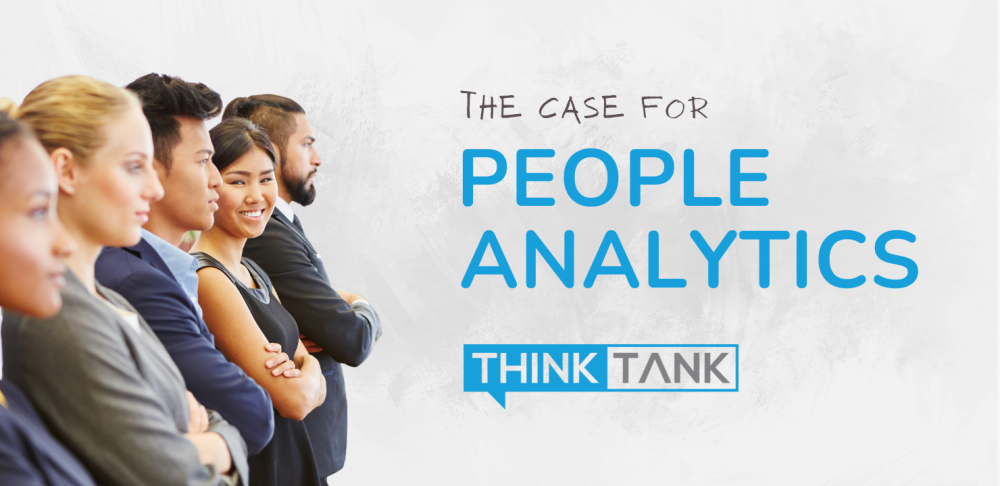Existing Client? Login
Article
The Case for Considering People Analytics

Over the last decade, people analytics has gone from obscurity to being at the center of HR. HR used to rely on limited information and gut feelings to make decisions, but, as organizations integrate people analytics, that's all changing.
Organizations are now using data and analytics to manage employees and make decisions. According to the Harvard Business Review, over 70% of organizations today believe people analytics is a key priority. With today's talent challenges, utilizing people analytics can help organizations perform more effectively in a competitive environment and give them a leg up as they compete for talent.
What Is People Analytics?
People analytics is a data-driven approach to managing employees. It involves collecting and applying organizational data to improve business outcomes. This data allows organizations to attain better insights and make talent decisions that can improve an organization's overall performance.
People analytics relies on data from traditional HR sources, including:
- Recruiting
- Demographics
- Performance and learning management
- Compensation and benefits
- Job architecture
- Succession planning
- Talent development
- Exit interviews
In addition to traditional HR data sources, people analytics relies on non-HR sources, such as finance, marketing, customer and other data. This holistic approach provides HR professionals with a deeper understanding of their organization, including areas for growth and improvement.
How Is People Analytics Used?
People analytics allows organizations to utilize data-driven practices to improve overall strategies. Organizations rely on people analytics to improve talent attraction, retention and development by using data to reduce bias and improve decision making.
Organizations can use people analytics to gain a competitive advantage in the search for talent by improving recruitment. Some organizations increased their recruiting efficiency by 80% and decreased attrition rates by almost 50% due to people analytics, according to recent research from McKinsey & Company. People analytics can identify individuals that will likely be successful employees by helping organizations understand factors that influence their overall performance and providing insights to address performance gaps.
Labor tends to be an organization's most significant cost. People analytics allows organizations to optimize their workforce costs by breaking them down into smaller and distinct parts, helping organizations understand how best to optimize the money they spend on talent. It can help organizations forecast staffing needs and future budgets by revealing their workers' skillset and identifying future business needs. This lets organizations bridge their talent gap by creating a talent pipeline and designing employee development programs to address their future needs.
By using artificial intelligence and machine learning, organizations can tap into data to reduce turnover by identifying at-risk employees and addressing potential issues, helping organizations reduce the time and money they must spend to find new employees. People analytics can also improve employee performance and, in some cases, increase employee output. In some cases, it has improved organizational productivity by 25%, according to McKinsey & Company.
How Organizations Are Leveraging People Analytics
Many large organizations have shifted to relying on people analytics to improve business performance and outcomes. Consequently, many may assume that people analytics is too costly or advanced for smaller organizations. However, this data-driven approach to decision making can help organizations, regardless of size. In fact, many small organizations have joined this trend by purchasing people analytics tools and hiring data analysts or training HR professionals to improve their talent. These small organizations have benefited by shifting to people analytics early since data integration is easier for organizations with fewer data.
People analytics improves organizations'—including small organizations—understanding of their workforce and helps them make better strategic decisions by generating business insights and supporting data-driven decisions. Organizations rely on people analytics to improve strategic business objectives in many areas, including:
- Talent sourcing
- Recruiting and hiring
- Employee onboarding
- Performance management, such as performance metrics and performance improvement plans
- Workforce planning, including analyzing talent and skill gaps and understanding what's impacting employee turnover
- Employee engagement and retention
- Employee lifetime value
- Employee benefits and compensation
- Employee wellness, health and safety
Before implementing people analytics, organizations need to decide what they want to achieve and then determine if people analytics can assist them with their goals. While people analytics can be a valuable tool for helping organizations solve problems with data and plan for future needs, if an organization does not have enough or reliable data, people analytics will likely not be beneficial. Organizations relying on people analytics need to foster a data-driven culture where business decisions are based on data instead of intuition. This may require organizations to invest in tools and hire individuals with data analytics skills for their HR departments.
Summary
People analytics is becoming increasingly common because there's less guesswork when making HR-related and general business decisions. Successful organizations tend to be ones that can adapt, especially during times of uncertainty or change. People analytics provides organizations with tools to assess real-time data that can be critical in making better decisions. By successfully implementing and relying on people analytics, organizations can better position themselves to compete in today's challenging market.
For more resources on people analytics, contact ThinkTank Insurance Partners today.
This article is not intended to be exhaustive nor should any discussion or opinions be construed as professional advice.

Marty Thomas
Marty has spent most of the last 20 years developing software in the marketing space and creating pathways for software systems to talk to each other with high efficiency. He heads our digital marketing efforts as well as oversees any technology implementations for our clients. As a partner, Marty is also responsible for internal systems in which help our team communicates with each other and our clients.